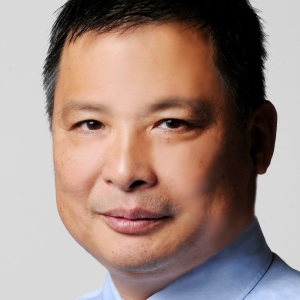Shaofan Li
783 Davis Hall
Tuesdays and Thursdays, 4:00 pm to 6:00 pm

Shaofan Li is a Professor of Civil and Environmental Engineering at UC Berkeley. Li's current research focuses on (1) Artificial-intelligence-aided design methodology and machine learning-based computational modeling methods, such as AI-based additive manufacturing modeling, AI-based inverse finite element method, traffic accident forensic analysis, and wire fire occurrence prediction. (2) Computational failure mechanics e.g. nonlocal peridynamics modeling and phase-field modeling of fracture. (3) Computational environmental fluid mechanics, such as prediction of human cough spreading and nonlocal computational fluid mechanics modeling, and (4) Nano- and mesoscale modeling and experimentation of sustainable cementitious materials. He also received the prestigious International Association of Computational Mechanics Fellows Award in 2017 and the National Science Foundation CAREER award in 2003, among other notable accolades.
Ph.D., Mechanical Engineering, Northwestern University, 1997
M.S., Aerospace Engineering, University of Florida, 1993
M.S., Computational Mechanics, Huazhong University of Science and Technology, 1989
B.S., Mechanical Engineering, East China University of Science and Technology, 1982
Li’s research focuses on developing physics-based phase-field modeling and simulation of fractures, computational methods for modeling and simulation of transmission and parthenogenesis process of infectious diseases, AI-based methods or statistic machine learning methods for 3D printing thermal compensation and inverse forensic analysis of car collision, engineering design, and other engineering applications. His research group is also working on solving some challenging problems in the field of computational mechanics, focusing on soft matter mechanics, atomistic and multiscale simulation, computational nano-mechanics, and computational fracture mechanics. Here are a few of the research projects Li is currently working on below:
- Developing Artificial Intelligence (AI)-based machine learning methods for solving engineering problems. Li's group has been developing machine learning-based methods for engineering designs, atomistic and multiscale simulations, traffic accident forensic inverse analysis, 3D printing, engineering structure analysis, and natural hazard prediction and forecasting.
- We are developing green construction materials for sustainability. Li's group has been working on developing both experimental and modeling methods for self-healing fungi-concrete and other green recycle concretes to reduce CO2 emissions for concrete infrastructures.
- Developing nonlocal environmental fluid dynamics methods for respiratory viruses and pathogen transmission Li's group has been developing the updated Lagrangian particle hydrodynamics (ULPH) to simulate fluid flows from cough-jets to multiphase flow to fluid-structure interaction problems, and we are also developing SPH and ULPH Large-eddy simulations for COVID-19 viruses transmission and other airborne respiratory viruses pathogen transmission.
- Developing phase-field and Peridynamics methods for modeling fracture and dislocations. Li’s research group has been developing phase-field and peridynamics methods to simulate material and structure failure at multiscale. We have used mesh-free methods to simulate large-scale ductile failure in steel structures, and they have applied the peridynamics method to simulate soil fragmentation and fracture in metals, ceramics, concrete structures, and in ice sheets.
Spotlights
No mentions in Spotlights
Student Updates
No mentions in Student Updates


